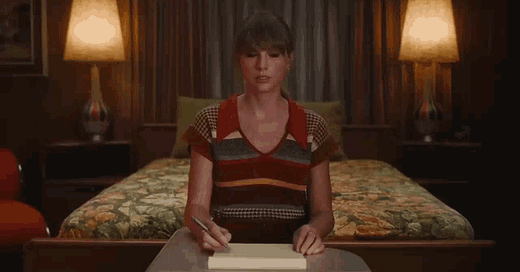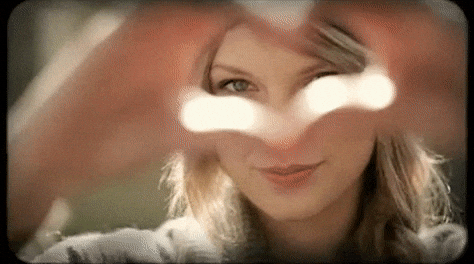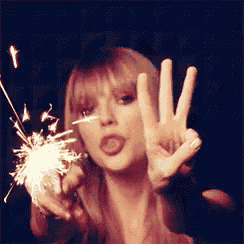"Why I've spent my whole life tryin' to put it into words"
New episode "You Are In Love" deep dive, out now!
What’s the true meaning behind Taylor Swift’s “You Are In Love”? This week on the AP Taylor Swift podcast, we dive into one of the simplest love stories Taylor has ever written. From meeting to falling in love to the first fight, Taylor crafted a narrative of a normal, everyday relationship that is still somehow completely life-changing. Join us as we dig into why this song is so beautiful and resonates with so many!
🎧 Listen above and ⬇️ scroll below to read Jenn’s extra credit on Taylor’s writing techniques and why they work so well in this song!
🎥 Sneak Peek
Catch excerpts from the podcast and behind-the-scenes content on YouTube, TikTok, and Instagram!
🛍️ Shop With Us! Active Discount Codes
As we grow, we are so excited to announce new partnerships! Here you’ll find active discount codes available to our listeners.
📚 Bookshop.org Check out all our book recommendations by episode
🔉Libro.fm Support your local bookstore while listening to great audiobooks
Code: APTS
Offer: Get a free audiobook when you start a new membership (you must use this link!)
Receive 2 audiobook credits for $14.99 USD with your first month of membership.Code: APTS30
Offer: 30% off specific audiobooks in the AP Taylor Swift playlist.
✨ Krowned Krystals Make the whole place shimmer with the best rhinestones
Code: APTS
Offer: 10% off your order when you use the link above
🎒This Week’s Extra Credit by Jenn
“You Are In Love” has always been a top-tier Taylor song for me. I’ve loved the simplicity of the story and the way that she captures those quiet moments of a rather quotidian love story that is actually revolutionary to the two people experiencing it. Of course, it was the perfect song for us to discuss the week of Valentine’s Day.
Back when I was a writing teacher, I often talked about the writing skill of “Show, Don’t Tell.” It’s a difficult balancing act because it can be easy to overdo it (sometimes…you just gotta tell the reader what’s going on). In “You Are In Love” though, Taylor executes this skill perfectly. She paints these scenes with just a few details to show us the love story. There’s no “boy meets girl, boy and girl fall in love” narrative here. Let’s get into what this looks like and why it works so well from a writing perspective.
The Power of Small Moments
If you were telling your friends the story of meeting your partner, you’d likely start with some “telling” activities. For example, whenever people ask about how Chris and I met, I share that we met on a trip to Chicago with a church group in college. That’s factually true! But not particularly romantic or foreshadowing the start of a romance. I met a lot of people on that trip who I didn’t end up marrying, but if you asked me how I met them, you’d get the same answer — “Oh, we met on a trip to Chicago with our church in college.”
Taylor could have done the same thing with this love story, but instead, she drops a lot of those external details and focuses on showing us the moments that let us know something bigger is happening here. “One look, dark room / Meant just for you” speaks volumes about what is happening here. Where is the room? When did this happen? The main details we use when telling stories are dropped in favor of showing us the moments that actually truly MEANT something.
Showing Helps Us Focus On What Matters
Some of the power of this song’s rhetorical strategy also lies in showing us moments when we truly don’t know what’s happening around the two characters, but we get the meaning. In this week’s episode, we talked quite about the line “the light reflects / the chain on your neck,” because we weren’t quite sure what the light is that is being reflected. All three of us had different ideas of what it could be, I personally pitched the idea of fireworks.
However, let’s pause for a moment and imagine if she had written this scene differently, and let’s assume it was fireworks. Something like “we watched fireworks” would still be a pretty image to paint (and potentially also symbolic with “fireworks” having multiple meanings), but it would place the focus on the setting around the moment. By focusing on the light reflecting on the chain, we stay locked in on the relationship between the two main characters in this story. It also shows us that these two people were locked in on each other. If it is fireworks, this line would imply that they are ignoring the fireworks and are more focused on one another. The fireworks, or whatever the light is, just doesn’t really matter all that much. In fact, other than “sidewalks” and “his place,” we get almost no setting details. All of the details Taylor shows us keep us focused on these two. It helps communicate that the relationship is what matters, not everyone else.
Creating a Universal Love Story
Taylor chose to tell this story from the perspective of an outsider. This choice adds another layer to the "show, don't tell" approach - we're not just being told about love, we're watching it unfold alongside her. Or, alternatively, we are listening to Taylor tell us about our own love stories. If she had focused more on the settings and hard facts about this love story, it would have taken away from the universal nature of the song.
By focusing on showing us the tiny details that led to these characters falling in love, she leaves more open to interpretation while still clearly communicating a narrative about what happened and why it mattered. This song is a master class in the “show, don’t tell” strategy. As listeners, we understand what happened, but we are invited to engage with the narrative and see where we connect to the lyrics. It’s specific enough we aren’t completely confused about what’s happening, but it’s showing us just enough details we can picture it for ourselves in our own head.
Why “Show, Don’t Tell” Matters
Well after all of this, I feel like I should leave you with a little bit of writing advice that I used to share with my students. Whenever we did the “Show, Don’t Tell” portion of class, I would have them do an activity where I would break the class into groups and give each group a very basic sentence that they had to expand using this skill set. The sentences all worked together to tell a basic story (usually it was something like “I parked my car at the curb.” “I got out of my car and walked to the gate.” “I walked up to the front door.”), so once they added their details, we would read the now-expanded story as a class.
This activity demonstrates why these details mattered. Groups would choose totally different genres, times of year, locations, etc. So one group would have their narrator parking at the curb while it was pouring rain and they were full of rage as they were about to confront a cheating lover, and then the next group wrote that their narrator walked to the gate on a sunny fall day excited to spend the afternoon with their grandma. Turns out that details do actually matter.
When I taught writing, one of my biggest challenges was helping my students get out of their own heads. Coming from high school and the 5-paragraph essay format, my students tended to write in pretty predictable ways without putting too much thought into what they actually wanted to communicate. The idea of details and description, in any genre of writing, was a newer concept for them. What “Show, Don’t Tell” taught them was to pause and think about what they wanted their readers to think and feel, and then how could they use descriptions and the right words to help guide readers to that point.
In “You Are In Love,” I believe Taylor wanted to communicate the mystery of love in a specific, yet universal way. By focusing on the details between the two individuals in the relationship, she was able to accomplish that quite effectively. “Telling” isn’t always bad writing, but it is often the default. My writing advice to you is to pause, think about what you really want your readers to take away from what you are writing, and then write (and revise!) by constantly asking yourself if you are accomplishing that goal. Whether it’s a job application where you want your readers to think, “she seems so qualified!” or a text to your friend where you want them to feel deeply loved by you, just remember that whatever you write is very rarely about you. It’s about what you are trying to communicate!







